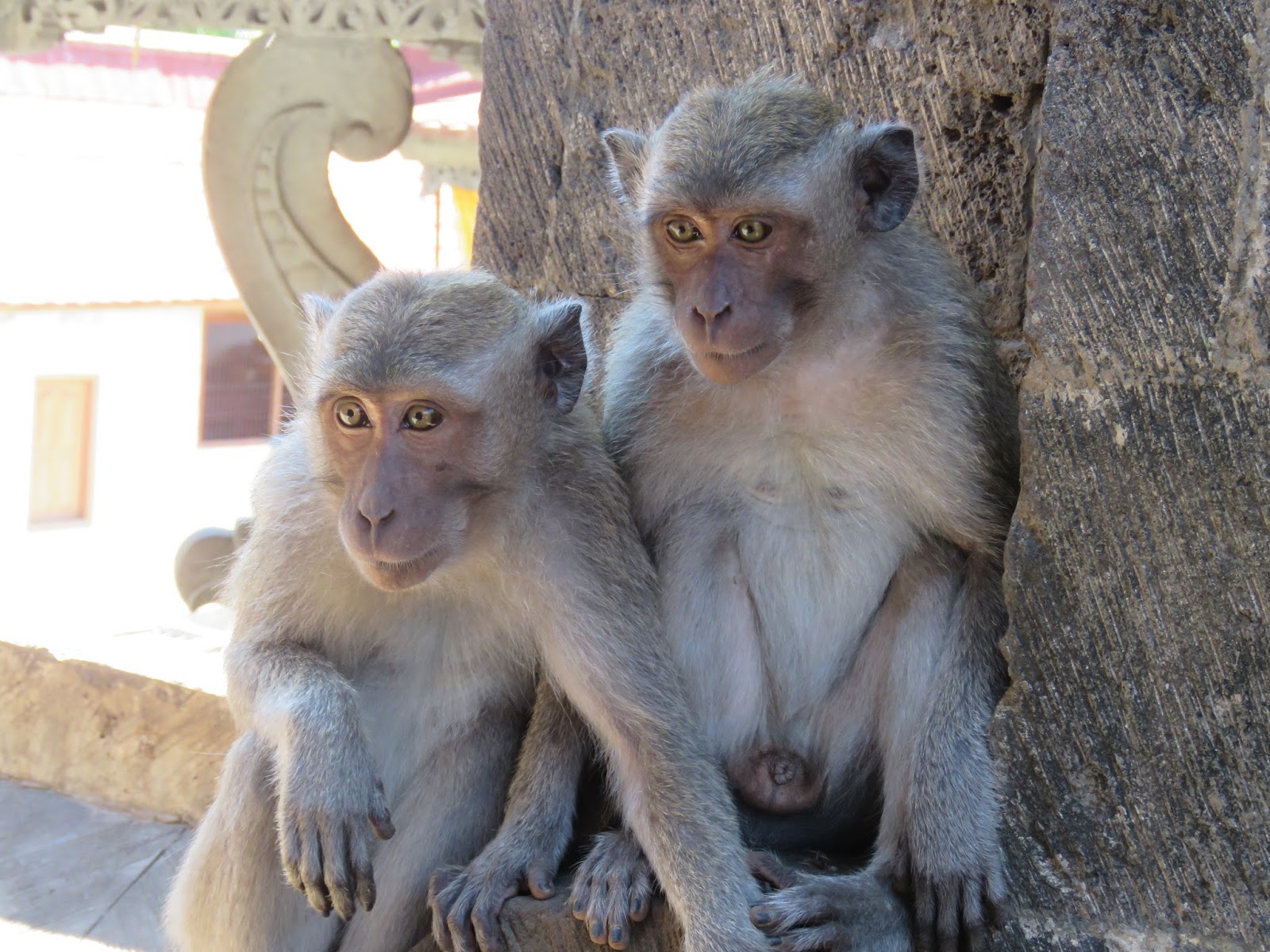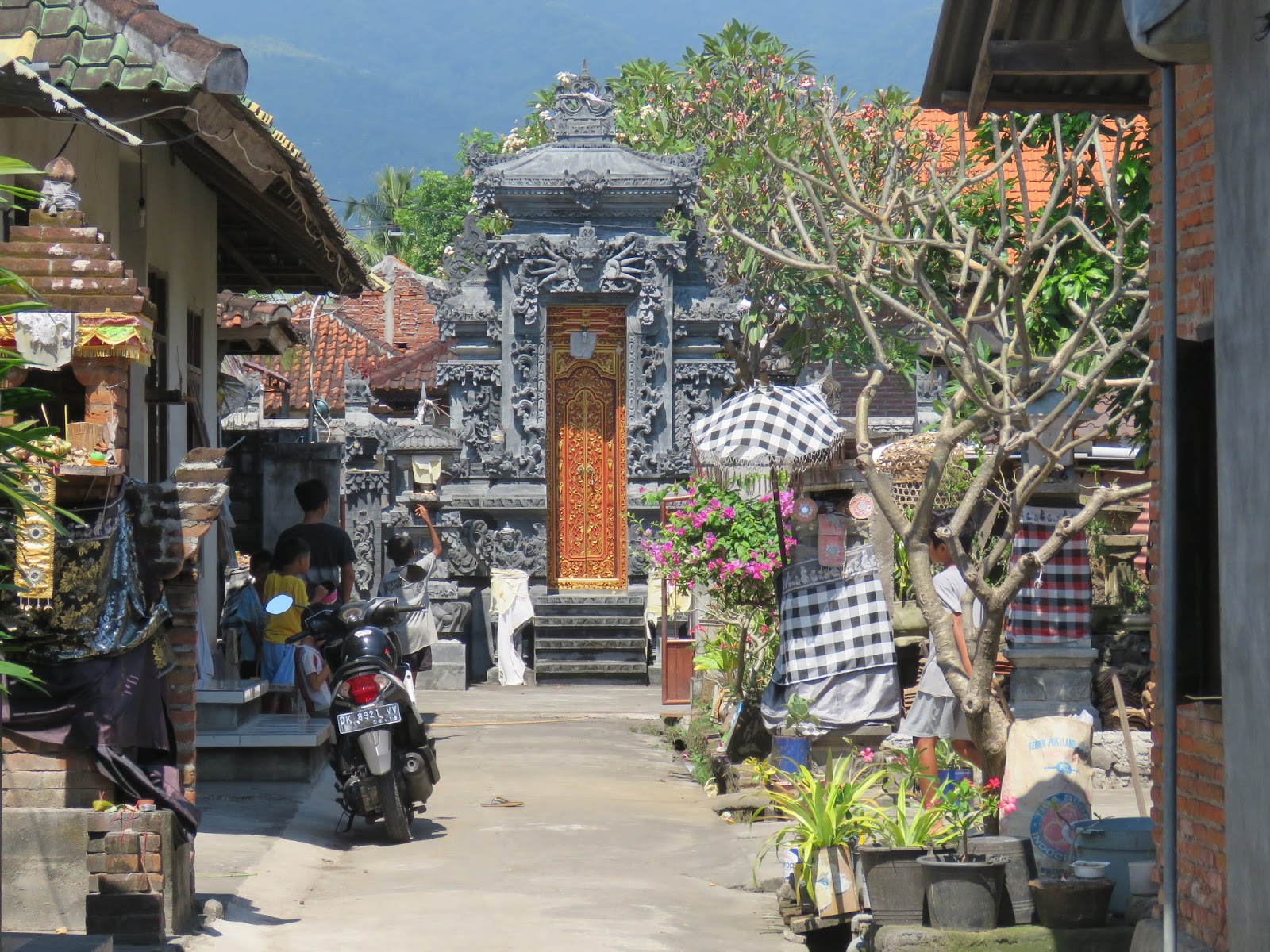 |
| No, thanks. We had no interest in walking on this bridge at Puente Ferrocarril Rio Grande Atenas. |
“Sightings from the Veranda in Costa Rica”
 |
| Inca Doves can mate for life and typically spend considerable time preening one another during the mating season. Tom took this great photo from the veranda. |
After we toured the locomotive and the museum (photos coming soon) with Juan Ramon, he enthusiastically encouraged us to make the walk down the railroad tracks to the abandoned bridge at the end of the tracks.
 |
| A railroad high stand switch was used to switch the train from one track to another. |
It has been raining every day for these past weeks since we arrived, and the ground was muddy and slippery in spots. Luckily, we were both wearing our water shoes which we could easily wash with the garden hose when we returned to the villa.
 |
| Several houses line the railroad tracks. |
With the issue of ruining our shoes out of the way, I contemplated whether this long walk over rough terrain would work for me. At the same time, I continue to recuperate after all these months, having yet to restore my previous level of fitness and stamina.
 |
| There was no road accessible by car to reach the houses along the railroad track. |
Hesitating to go at all and realizing how long Tom and Juan Ramon would be gone, I decided “what the heck,” and I began the trek along with them. At a few points, as shown in a photo in yesterday’s post, they stopped to wait for me.
 |
| Although difficult to see in these photos, the river runs under the bridge. |
Tom stuck close to me at other points, holding my hand as we navigated the more difficult spots. The trek was much further than anticipated, although some TripAdvisor reviewers mentioned it in their comments. I knew that the more walks we do like this, the stronger I’ll become.
 |
| Walking on the bridge didn’t appeal to us. |
Finally, after stopping from time to time to take photos, we made it to the bridge. Oddly, Juan Ramon and I communicated a little while I explained that our world travels in my choppy Spanish. He asked me to name some of the countries we’ve visited and seemed most intrigued with those in Africa, as is often the case.
 |
| We didn’t see any reason to walk on the old rickety bridge, so we went as far as we could without doing so. |
He told me about his family and his years of working on the railroad. He was particularly fascinated with Tom’s 42½ years spent working for Burlington Northern Santa Fe railroad in Minneapolis, Minnesota, USA. He kept this in mind as we toured the property and museum, knowing Tom was a highly experienced railroad man.
 |
| At a few points, we could see the Rio Grande River. |
Moving on to more current events of today, we finally reached out to make social contacts in Atenas. A few weeks ago, I joined an Atenas ex-pat group on Facebook, spending a few minutes each day lurking without commenting.
 |
| Although the ground was pretty level as we walked toward the bridge, walking was precarious at times. It has been raining daily, and some spots on the dirt path were slippery and muddy. At many points, we had to walk in the center of the track. |
Yesterday afternoon, I stuck my neck out and wrote the following post on Facebook:
“Hello, we’re world travelers staying in Atenas for almost four months in Roca Verde. We’d love to meet some of you. Any suggestions on where and when we could hang out and have an opportunity to make some friends would be appreciated. On October 31st, it will be five years since we sold everything we own and started this journey. We don’t own a home, have an apartment or condo anywhere, or have storage anywhere. We’d love to hear about your travel experiences and more about Atenas. Please message me or click my email on our blog at www.worldwidewaftage.com”
 |
| A least half of the way, we walked on the gravel on the tracks when the dirt path ended. The railroad ties were a combination of wood, concrete, and steel. |
We’d heard ex-pats in Costa Rica were as friendly as the locals. After receiving 12 comments following my post, we already have plans for tonight to go with a neighbor living in our gated community of Roca Verda to an event in town, a rock and roll festival, and a barbecue at a local restaurant. Next week on Wednesday, we’ll attend a luncheon, mainly a women’s group, but the men come along and sit at a separate table.
At 3:30 today, we’ll walk down the steep road to Barb’s home and ride with her to the event. We’ll explain we’ll arrange a taxi to take us home so she doesn’t have to give a thought as to when we’d like to go or stay. Easy peasy.
 |
| This house on stilts along the tracks appeared to be occupied. |
Then, we received a few email messages for more plans for next week when we’ll have a car again. How fun is this! Tom and I both shook our heads, wondering why we hadn’t done this sooner. After all, we’ve already been here for over six weeks.
We have no doubt we’ll have a good time as we often do with other retirees, many of us who’ve stepped outside the box to live a different life from what they knew living in their native country. It’s always interesting to hear “why” others have chosen this path.
We’ll be back tomorrow with the story of what we discovered when spending the late afternoon and evening with ex-pats from several countries. Of course, we’ll be taking photos to share here.
Have a fabulous Saturday!
Photo from one year ago today, September 16, 2016:
 |
| Locals fishing along the shore in Sumbersari Bali as seen from our villa’s veranda, one year ago today. For more photos, please click here. |

























































































































